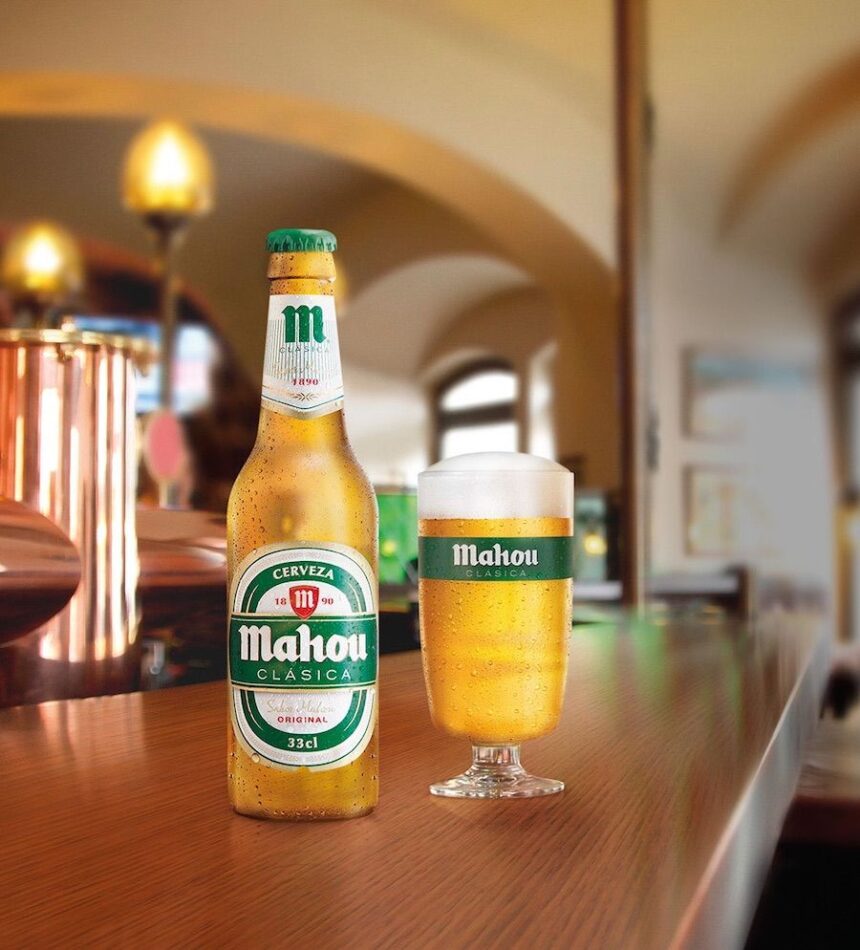For many, allegiance to a particular beer brand runs deep, akin to sports team loyalties. In Spain, Mahou enjoys such fervent support. Founded in the streets of Amaniel, Madrid, in 1890, Mahou has garnered a legion of fans, extending beyond the capital.
Much like the perennial debate over whether to add onions to tortilla española, Mahou enthusiasts find themselves torn between Mahou Clásica (affectionately known as “verde” or green) and Mahou Cinco Estrellas (dubbed “roja” or red), distinguished by the color of their labels.
Beyond this aesthetic difference lies a host of characteristics that set one apart from the other, including alcohol content and price, but perhaps none more intriguing than their calorie content.
Understanding the Differences Between Mahou Clásica and Cinco Estrellas
Before delving into the calorie discrepancy, let’s define Mahou Clásica and Cinco Estrellas. According to the brewery’s website, Mahou Clásica boasts a “golden color, bright appearance, and moderate body, distinguished by its smooth flavor and balanced palate with a light, fruity aroma.”
On the other hand, Mahou Cinco Estrellas is described as “a golden beer with creamy, consistent foam, featuring a distinctive, moderate, and refined flavor with a fruity aroma,” offering a delightful balance that lingers on the palate.
One notable distinction lies in their respective dry extract content. Mahou Cinco Estrellas boasts a dry extract equal to or exceeding 13% but not reaching 15%, whereas Mahou Clásica’s dry extract falls below 13%. For the uninitiated, dry extract represents the fermentable sugars present in beer fermentation, contributing to density, body, and flavor.
Which Mahou Beer Packs More Calories?
Calories, as units of energy, are not inherently negative. The body requires calories for energy, but consuming more calories than the body expends often results in the storage of excess energy as fat.
With this clarification in mind, let’s address the question at hand. Both Mahou Clásica and Cinco Estrellas are crafted from water, barley malt, corn, and hops. However, while Clásica boasts 4.8% alcohol by volume, Cinco Estrellas escalates to 5.5%, rendering the former milder and the latter more robust.
In terms of calorie content, Mahou Clásica contains 30 kilocalories (kcal) per 100 milliliters (ml), whereas Mahou Cinco Estrellas packs 49 kcal per 100 ml. This disparity extends to other nutritional values.
Regarding carbohydrates, Clásica contains 2.3 grams per 100 ml, with 0.1 grams attributed to sugars. In contrast, Cinco Estrellas registers 3.9 grams of carbohydrates per 100 ml, with the same sugar content. Furthermore, Cinco Estrellas contains 0.4 grams of protein per 100 ml, slightly higher than Clásica’s 0.3 grams.
In conclusion, Mahou Cinco Estrellas emerges as the higher-calorie option, boasting a richer flavor profile and slightly elevated nutritional values compared to its Clásica counterpart.











